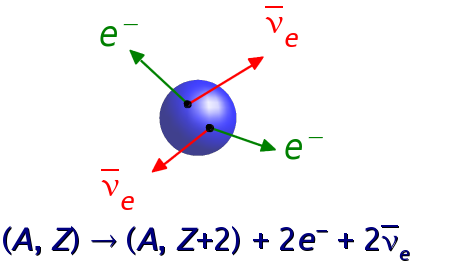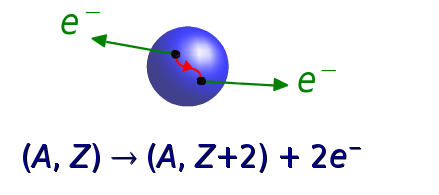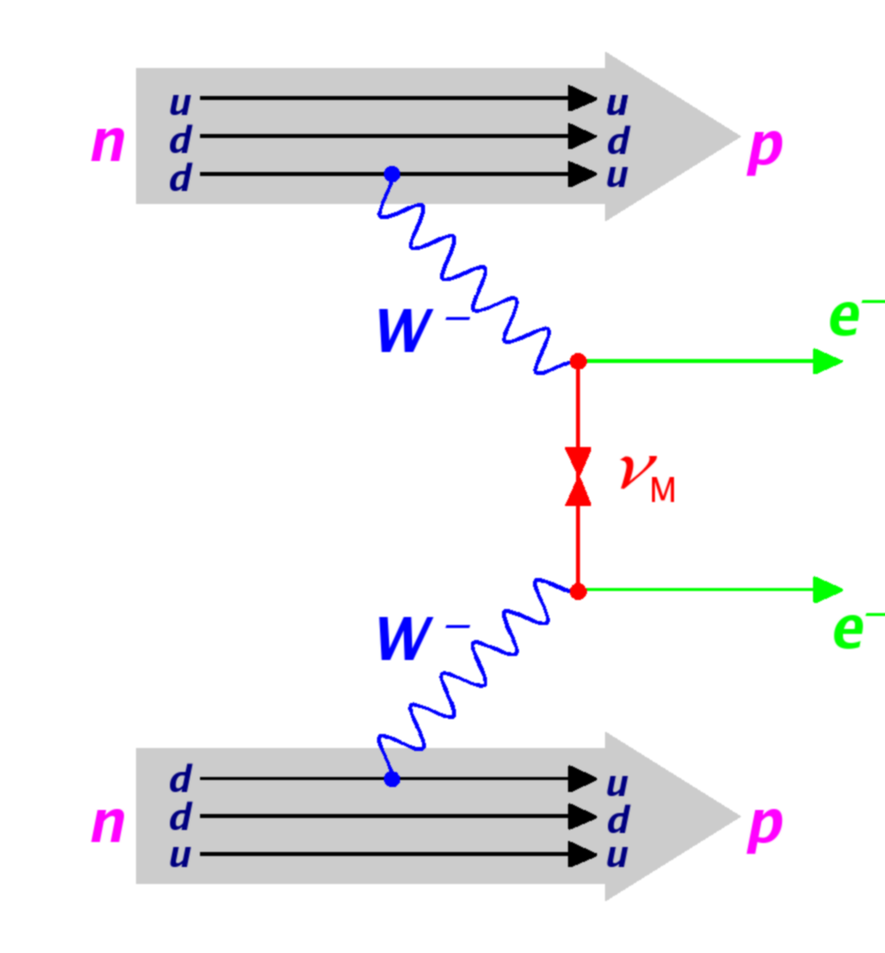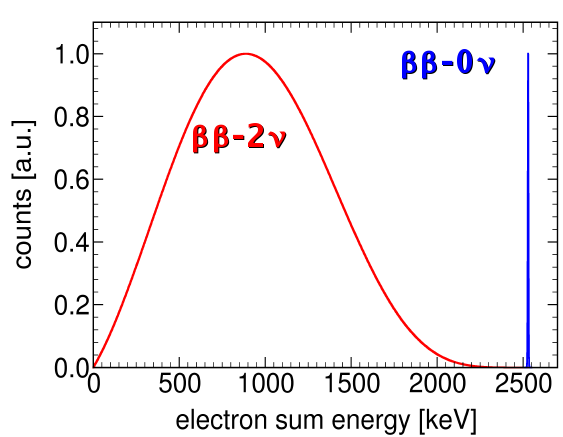Low Temperature Detectors for Neutrino Physics
University of Milano-Bicocca / INFN Milano Bicocca Group WEB page
In the Standard Model of Elementary Particles the neutrino ν is assumed to be not the same particle as the anti-neutrino ν, i.e it is a Dirac particle. In many extensions to the Standard Model aiming to the Grand Unification of particle interactions and in theories of particle mass generation, the neutrino and the anti-neutrino turn out to be the same particle, i.e. the neutrino is a Majorana particle. The only available experimental probe to asses the actual nature of the neutrino is the search for the neutrinoless double beta decay.
The double beta decay is a second order weak transition which can be energetically favored for some even-even nuclei belonging to A even multiplets. The (A,Z)→(A,Z+2)+2e−+2νe double beta (ββ2ν) decay process is allowed by the Standard Model and has been observed for many isotopes. The neutrinoless double beta (ββ0ν) decay given by (A,Z)→(A,Z +2)+2νe violates lepton number conservation and is therefore forbidden by the Standard Model. The lifetime for the ββ0ν decay is expected to be longer than 1025 years and there is only one criticized experimental evidence found for 76Ge in the Heidelberg-Moscow experiment. The lepton number violating process ββ0ν can occur only if the neutrino is a massive Majorana particle (i.e. ν = ν) and it is the only known probe to test whether the neutrino is a Majorana or Dirac particle.
 |
 |
 |
Isotopes which could decay by ββ0ν are for example 48Ca, 76Ge, 100Mo, 116Cd, 130Te, 136Xe, 150Nd. Experimentally, searching for ββ0ν decay consists in detecting the two electrons emitted in the transition sharing the available decay energy Qββ. The search for this rare decay requires:
- large masses of the candidate isotope
- high energy resolution detectors
- high detection efficiency
- low radioactive background
These requirements are in part fulfilled by the calorimetric approach where the isotope is contained in the detector and only the sum energy of the two electrons is measured. In this configuration the signature for ββ0ν decay is a peak at the transition energy Qββ.

As calorimeters, low temperature detectors provide high energy resolution and the possibility of studying many different isotopes. Observing the ββ0ν of several isotopes is crucial to confirm any positive result and to reduce the impact of systematic uncertainties.
To reduce the radioactive background, experiments are carried out underground and are constructed with specially selected materials. A further reduction can be obtained using active background rejection techniques.